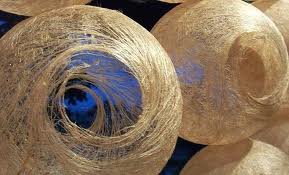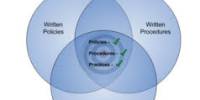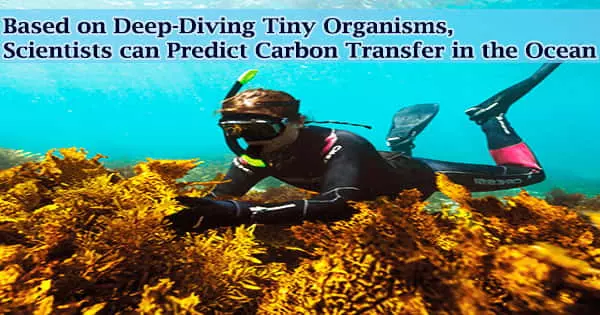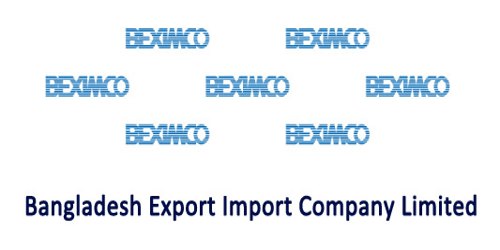Introduction
Brief Description
The principal materials used in the spinning sub sector are raw cotton and synthetic fibres such as viscox and poly star who should be important abuse none of these materials, however, are produced in Bangladesh on a large enough scale to supply a signature part of the demand. The reasons for this are complex. The spinning mills product is the just grey yarn for different purposes. This yarn used to 100% export oriented knowledge and also used in stitching ready made garments. So this type of industry an play a vital note as a backward linkage project of 100% export oriented textile sector.
Brief Description
The basic raw material of a weaving unit is yarn. There are numbers of spinning mills producing just grey yam for different purposes. But there is a great demand of dyed cotton yarn in the country. But only a few number of yarn dyeing plant is in operation. This yarn is also used in stitching ready-made garments.” So, this type of industry can play a vital role as a backward linkage project of 100% export oriented textile sector. In the same compound of proposed Silver Line Composite Textile Mills Ltd. the proponent Mr. M.A.H. Salim a business personality .with C.I. P. status has come forward to establish an yarn dyeing plant as a integral part of a composite textile unit in the name of BABAR SPINNING MILLS LTD. at Gazipur in his own huge land.
The group has a strong financial background with highly qualified and experienced technical and management personnel support to establish this new project keeping ail the necessary environmental issues their mind with special consideration.
It is well recognized that each industrial development has impacts on the natural environment directly or indirectly. So, before taking up of any project, the environmental aspects cm the proposed development activities must be taken into consideration and due attention must be paid to protect the environment. The first step in this process is to identify the potential impacts of the project and evaluate the intensity of the impacts so that suitable effective measures can be taken in the early stages to mitigate the adverse impacts.
This report describes the findings of an Initial Environmental Examination (IEE) of the Proposed BABAR SPINNING MILLS LTD. at Gazipur, Dhaka, Bangladesh.
Scope & Objective
This study will provide the information on impacts of different environmental issues due to the proposed. With these information mitigation measures could be suggested to afeafe the impacts’ on *the existing environment of the industrial area. The main objectives of this report are:
to present the project activities;
to describe the existing environment;
to identify the major environmental impacts due to the operation industry;
to suggest the affective measures to mitigate the adverse impacts;
to recommend whether a Comprehensive Environmental Impact Assessment (CEIA) is required or not.
This report describes the Initial Environmental Examination (IEE) of Proposed BABAR SPINNING MILLS LTD.
Methodology
This report has been prepared on the basis of the information supplied by the project proponent and undertaking a site visit to the project location with a view to reconnaissance survey of the surrounding areas. This was followed by evaluation of the information to delineate the possible environmental issues relating to the SYDL During this process the following steps are followed:
critical analysis of the project document;
understanding the process involved in the development activity;
identification of potential impacts and evaluation of their consequences, identification of impacts has been done using Checklists method.
This report is prepared following the EIA methodology as described in the EIA guidelines for industries (June’97) of Department of Environment (DOE, 1997) and other related materials.
Limitations
An Initial Environmental Examination (IEE) is generally carried out, as an integral part of Feasibility Study (FS) and before finalizing the site for any project. In case of SAMIT YARN DYEING LIMITED the present report is being prepared as a separate document from FS. At this stage, their is no logic in looking into alternative site and keeping all into consideration the present report delineates the environmental factors and conclusions are made in accordance to these limitations.
Legal & Policy Consideration
As per EGA 95 & EPR’ 97 the industries are categorized as Green, Amber (A&B) and Red. Under the recent rule all industries/projects in Amber (B) And Red category will require an IEE for necessary environmental clearance for proposed industries. The BABAR SPINNING MILLS LTD. alls under Amber (B) category. To fulfill this requirement the IEE of SAMIT YARI DYEING LIMITED, is carried out.
The IEE Team
Moor Foundation Ltd. prepares this report under the guidance and supervision of Dr. J. C. Saha, team leader for this assignment. The other members of the team are Engr. S.I.N.A Chowdhury and Shams Anwar. The team leader is a Civil Engineer completed Ph.D. in Environmental Engineering and the other members are Petrochemical engineer and economists with specialization in EIA respectively.
Project Description
Present Status of the Project
The project is in initial stage. The civil construction is yet to be started. The project proponent has got No Objection Certificate (NOC) for the industry from the local authority. The factory will be engaged in yarn dyeing for own consumption as well as other weaving and knitting industries, sewing tread for garments industries, dyed cotton yarn for sweater industries and dyed embroidery thread for embroidery industries. The plant will consist of state of art world class machinery with a common effluent treatment plant (Silver Line Composite Textile Mills Ltd.) as both the plants with in the same premises. The basic data on SYDL furnished in Table-1.
Location of the Project
The Processed plant is located at Mulaide, Sreepur under Gazipur district and about 1 km to the Dhaka-Maymensingh Highway. The area is consists flew big industries. On the East side of the project ATI Ceramic Industry and some shops are located and on the West there are vast vacant land. On the south another industry namely Givency Spinning Ltd. On the North side there are some scattered homestead and vacant land. A canal is situated on the North side of the project, flows to the river Turag. However, the Utah Composite Knit & Dyeing and Utah Spinning Ltd. is located non the North-East side of the project. The proposed project located at a distance of 36km from Zero point. The plant location is shown in the location map (Fig. 1).
Basic data on BADAR Spinning Mills Ltd.
1. Name of the Project : BADAR Spinning Mills Ltd.
2. Project Proponent : Md. Abdus Salam
3. Project Location : Mulaide, Sreepur, Gazipur
4. Final Product : Yarn
5. By-product, if any : 5,000 Kg/day
6. Plant Capacity : Tk. 305,000,00
7. Project Cost : 176 (Managerial Skilled and unskilled)
8. No. of Employees : 2100 KW
9. Power Requirement :
10. Water Requirement :
11. Total area of land
13. Covered area
Baseline Environment
Physical Environment
The proposed project is located at Hotapara, Joydebpur under Gazipur District and about 3 km to the west side of Hotapara Bazar Dhaka-Maymensingh high way. There are several industries in this area. Some of those are ‘Givency Spinnings Ltd.’, ‘ Utah Spinnings Ltd.’, ‘ ATI Ceramic Industries Ltd.’, Utah Composite Knit Dyeing Finishing’ (Proposed) etc.
The project site is enjoying infra-structural facilities like, power, water and drainage system connected to the near by cannel, which flows naturally to the river Turag. (5Km)
Water Quality
The river Turag at a distance of 5,km at the west of the prop0sed site, used for navigation purpose. Regarding pollution load concern, the TuragRiver eventually receives various wastes from different industries of Konabari BSCIC Industrial Estate, Kashempur, Kadda in the up-stream. Motorized water vessels at the river Turag also add considerable pollutional load toxthe river in terms of oil and grease.
Up to date water quality data of these fiver are Rot Situate
Air Quality
Up-to-date air quality data around the project site are not available, as there is no provision for monitoring air quality in the area. But during site visit it was observed that the apparent ambient air quality of the area is excellent.
Hydrology
As other parts of the country, this area also receives sufficient amount of rainfall and there is a good availability of groundwater, which is being, used by hand pumps for drinking and domestic purposes. Some industries using deep tube wells within their premises to meet the requirement of good quality water for various purposes. There is no specific complaint about non-availability of ground water.
Climatic Condition
The climate of the region is tropical monsoon. As per Bangladesh Bureau of Statistics (BBS, 1994) the maximum temperature at Dhaka/Gazipur is 39.2°C in April and minimum temperature is 10.2°C in December in 1993. Average maximum humidity is found to be 86% and minimum being 63% in May and March, respectively. In 1993, maximum and minimum rainfall is found as 556 mm in May and 2000 in December, respectively.
Identification of Potential Impacts
Identification of potential impacts due to the plant location, construction and operation of the yarn dyeing plant has been done using checklists. Checklists are comprehensive lists of environmental effects and impacts indicator designed to stimulate the analyst to think broadly about possible consequences of contemplated actions (Munn, 1979). Table – 3 represents the checklists developed for the proposed plant.
In this checklist, actions, which may affect at the various stages of the project activities, are listed and the degrees of Significant Environmental Impacts (SEIs) are shown. The terms none, minor, moderate and major are used in the checklists to classify the magnitude of SEIs. In the checklists, both the construction and operational phases of the proposed development are considered separately in order to distinguish the short term and long term impacts. As can be observed from the checklists, the major activities which have the potential of. creating major SEIs either negative or positive are, liquid and solid wastes discharge from yarn dyeing plant and employment. All these impacts will be arising in operation phase of the project.
Next
Spinning Technology
In the last 2 decades various efforts were made in the development of new spinning technology such as open End Rotor Spinning. Cpen and Friction spinning, Air jet spinning core spinning etc. But major progress has taken place in ring & rotor spinning in which production rates were increased tremendously, the fields of application were extended, the economy and product quality improved and the recycling possibilities remarkably developed.
Globally most yarns are produced by the ring spinning process. No other piming process can match its process the waste field of application and the specific yarn properties.
The high speed ring spinning frame is provided with an ultra-modern drafting system either spring loaded or pneumatic, high speed spindes, rings infinitely variable speed control system, auto doffng and even ajto feed to corners the new configuration of ring traveler along with the innovative spinning geometry market possible to operate the spindles up to 22000 rpm.
In the back process of spinning line, production rates were increased in multiple ways. £part from the productivity, various automation and quality measurers were introduced with recent years. The purpose of the automation is to further insure a consistently hich quality at a higher efficiency & reduced personal requirement. In the blow room machinery, automatics in feeding, mixing, lap doffing or auto chute feeding direct to the carding section, as well as improved cleaning and feed regulation techniques are used to achieve a high degree of regularity in the lad and silver. Similarly, high production cards are being and increasingly with bop production figures, optical web and silver quality. Thus high speed comber adopted with half lap uni-comb and high speed draw frames with modern drafting techniques, positive feed creel with optical step motion, auto can changer main gears sealed in oil bath lead to higher prodxtivity fiber parallelization and silver regularity modern simplex fly frame is equipped with improved drafting parts suspended flyer pneumatic suction cleaner, larger package etc,In the yarn finishing process auto-pneumatic splicing, and electronic slub catcher in the winding machine become imperative for good quality final packages of yarn.
Manufacturing process;
The sequential process of yarn manufacture may be describe as follows:
Opening Mixing &. Cleaning (Below Room)
Cotton from its constituent bales are blended and mixed at the hopper feeder and processed through a series of opening and cleaning machines installed the blow room. These machines can be used in various arrangements which will provide different levels of cleaning, the cleaning times also meludes a metal extractor and a central dust fitter unit. The cleaning line opens the tufts of fibers and remoras dirt, foreign impurities and thus provide cleaning and fiber preparation. Ultimately this opened and cleaned cotton is rolled into laps. Depending on the different grades of raw cotton, their trash-content and deg-ee of cleaning desired, 3-5 cleaning points are used whole the man made staple fibber is processed in the blow room using only & cleaning points with other cleaning points by passed according to the requirement.
Carding;
The objectives of carding are to individualize the fibers, remove dirts, naps and short fibers and to fcrm uniform silver. The lap from blow room is fed to the card through feed roller and dish plate where the fringes of fibers are taken away by the taken in mounted-with metallic wires. After further opening and cleaning at the taken in virgin, the fibers are transferred to the cylinder region where the main ca-ding action takes place in between cylinder and flats. Fibers are there transferred to doffer by the striping action and produce a thin web. The web is than formed into silver of certain fixed weight per unit length and coiled into silver cans for transfer of caded silver to the next process.
Drawing
The silvers in cans are fed doubling at the feed and of the d-aw frame. At craw frames by doubling and drafting parallelization of fibers takes place. The end product is regular silver, which is again coiled into silver cans for processing carded cotton or polyester yams only 2 passengers are required at draw frame and for combed cotton yarn, 2 passages after combing are required.
Simple Fly Frame
The silvers proposed at draw frames in the above mamer are then fed to fly frame, where draftna takes place together with application of some amount of twist to reduce the bulk. The end product, roving, is then wound en the bobbins in package form.
Ring spinning
The packaged roving bobbins are fed to ring spinning frames, where considerable drafting take place together with application with twist. The end product yarn in the wound on ring cops (bobbins). It is a conventional spinning system in which twists are inserted in a yarn by suing a revolving traveler. The yarn is wound on since the rotational spend of the package is greater that that of the traveler.
Winding
The yarn ring cops (bobbins) are fed to winding machine where yarns are wound on to larger package (cons or chess forms) at high speed us to 1200 m/min. Imperfections lie naps and slabs a-e removed and broken ends are spilled at the winding head manually or autorraticalfy. The yarn is then packaged into cone and finally wrapped and packed in polythene bag for marketing.
PROCESS FLOW DIAGRAM
The detail of the machinery is as follows:
Lift of Machinery to | be imported | ||||
No. | Specification of the Machine | Origin | Quantity | Unit Price (USD) | Total Price (USD) |
| 1 | Blow Room (Trucheler) | German | 1 | – | – |
| 2 | Carding (Trucheler) | German | 6 | 990,600000 | |
| 3 | Drawing | Japan | 6 | 60,000.00 | 360,000.00 |
| 4 | Simplex | China | 4 | 60.000.00 | 240,000.00 |
| 5 | Ring Frame | German& China | 30 | 33,024,00 | 990,720.00 |
| 6 | Ajto coner | Japan | A | ISSpOO.CG | 740,030.00 |
| 7 | Waste collection Systems | Taiwan | 1 | 60,000.00 | 60,000.00 |
| 8 | Hjmidifications systems | Taiwan | 1 | 170,000.00 | 170,000.00 |
| 9 | Yarn Conditioner | Korea & India | 1 | 50,000.00 | 50,000.00 |
| 10 | Compressor | German | 1 | 30,000,03 | 30,030.00 |
| 11 | Sliver Can Ajxihary | 35,000.00 | 35,000.00 | ||
| 12 | Machinery | 335,000.00 | |||
| 13 | Generator | LEA | 1 | 335,000.00 | |
List of other auxiliary machinery and equipment to be imported
| Department |
| Particular/Name | Origin | Quantity | Unit Price | Total Price |
| 1 | Roller Shop | 1 | Cot Grinding | India | 1 | 16,500,00 | 16,500.00 |
| 2 | Cot Grinding & D-Mou | India | ] | 7,000.00 | 7,000.00 | ||
| 3 | Cot Growing | India | 1 | 1,200, o0 | 1,200.00 | ||
| 4 | UV Treatment | India | 1 | 9,775.00 | 9,775.00 | ||
| 5 | Cot decreasing | India | 1 | 1,725,OC | 1,725.00 | ||
| 6 | Eccentricity mfc | India | 1 | 2,650.00 | 2,650.00 | ||
| 7 | Swindle oil lubricating machine | India | 1 | 4,500.0C | 4,500.00 | ||
| <t | Ca-d Shop | 1 | Nbunting m/c | India | 1 | 7,475.00 | 7,475.00 |
| 2 | Cylinder grind hg m/c | India | 1 | 6,325. od | 6, 325.001 | ||
| 3 | Tops grinder | India | 1 | 8,625. OC | 8,625.00 | ||
| 4 | Tops clpphg m/c | India | 1 | 40,250. OC | 40,250.00 | ||
| 3 | Testing Equipment | 1 | Evenness tester | India | 1 | 103.500.0C | 1CG, 500.00 |
| 2 | Rber/HVI Tester | India | 1 j. | 97,750.0C | 97,750.00 | ||
| 3 | Sngle yarn strength tester | India | 1 | 40,250. OC | 40,250.00 | ||
| 4 | Naps tester | India | 1 | 66,700.0C | 66,700.00 | ||
| 4 | Others Equipment | 1 | =orklifK)3ton | Japan | i | 20,000. OC | D,000.00 |
| 2 | ^and fork lift | Japan | 2 | 3,OOO.OC | 6,000.00 | ||
| 3 | Vacuum Cleaner | German | 4 | 5,200. OC | 2D,80U.OO | ||
| 4 | lighting scale | China | 4 | 750. OC | 3,000.00 |
List of Power Transmission systems
SI. No. | Particulars | Amount In Lac “Tk | Remarks |
| 1 | Cable | 65.00 | HT Cable, LT Cable & M/C Connection Cable |
| 2 | IT, DB&CP | 55.00 | Distribution Board, Confrol panel & LTfor M/C Electrical Connection & Safety |
| 3 | Transformer & Others | 25.00 | |
| 4 | Lighting | 10.00 | |
| Total | 155,00 |
Utilities:
Water
The project will require water for various civil works dring implementation and for heat set of yarn during operation of the mill and human consumption. A good amount of Taka 8.00 Lac has to be provided for underground water reservoir, overhead water tank, deep tube- well and distribution system of water and added with the investment cost.
Power
The proposed spinning unit will require very negligible power supply as the project will be run by a Gas Generator. However, the provision for required electricity will be there. The cost of Electrical installation and Gas Generator has been stipulated in the project cost.
Gas
A Gas Generator will be installed with prospect the to higher cost in electricity and to avoid load shading. Gas Generator will be imported from USA, Cost of the Generator is LSD 3,35,000 and a sum Tk. 155.00 Lac will be required for installation.
Fuel and Lubricants
Project will require other fuel, lubricants for which required expenditure head has been shown in the financial aspect.
Installation, Commissioning and Trial Run
The machinery will be installed, commissioned and put into trial run under the supervision of foreign erectors to be deputed by the machinery suppliers and local engineer. The sponsors have to pay for the food, lodging, transport, air tickets and pocket money to the foreign erectors to be deputed by the machinery suppliers. Other than installations for which necessary provision in the investment cost of the project has been made. Erection and installation of machinery has been estimated to require approximately 1-2 months time.
Raw Materials
Importable
Basic raw materials generally used by the textile spinning mills are raw cotton of different staple lengths. Raw cotton are behg imported to meet the requirement of the textile spinning mills since the local production of raw materials is very insignificant. For the proposed product-mix, raw cotton having CIS 1-7/16, 1-1/8, 1-5/32 will be required.
C&F price of imported raw materials such as different types of raw cotton as well as polyester fibers of various origins have been estimated for the project on the basis of average C&F prices prevailed cbring recent times, which has been quoted in the International “Cotton Outiook” and currently used by the exporter i.e Tk.46-47 per pound. The raw materials requirement and wastage is shown at Financial Part.
Textile spinning mills do not consume any major local raw materials other than packing materials such as paper cone, trade mark label, polythene papers, carton, sacking etc. for baling, bunding and packaging of finished products. Annual cost of such local materials has been taken into account and incorporated in the operating cost of the project.
Implementation Schedule of the Project
Taking into consideration the time generally required for execution of similar textile units in our country, it has been estimated that approximately 12 months will be required to put the mill into commission from the commencement of execution work.
The major physical work of the project to be involved construction of factory buildings, god owns and ancillary works, opening of L/C and other activities concerning procurement of importable machinery, procurement of local machinery and equipment has already been proposed with civil work, erection and installation of the machinery and equipment, trial run etc. Many of the works will be undertaken simultaneously whole some activities will be dependent on correlation of others.
















